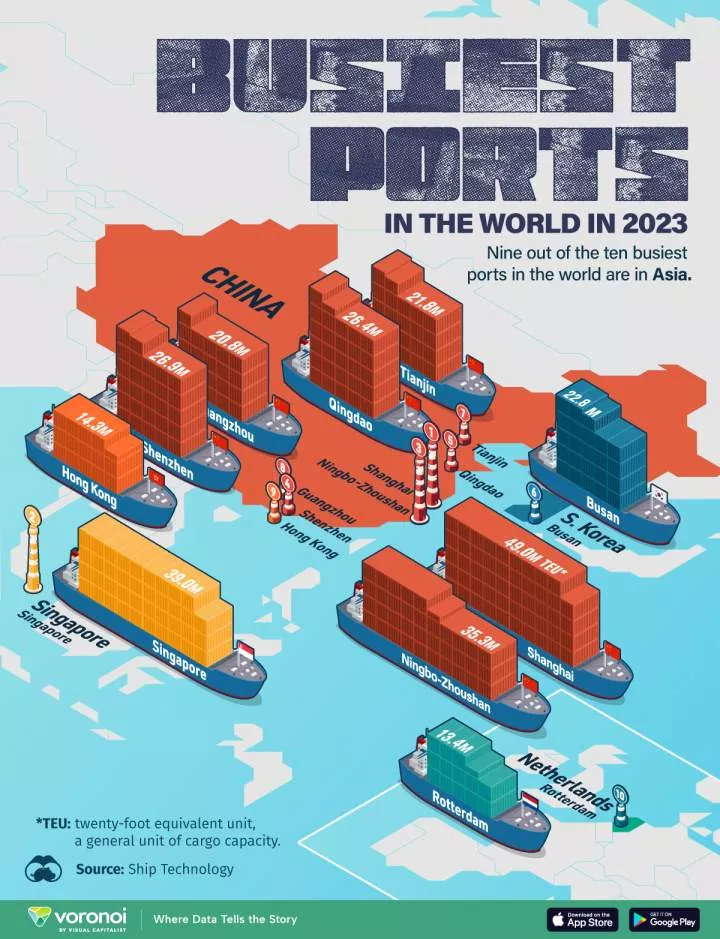
In today's interconnected world, ports play a pivotal role in facilitating global trade and driving economic growth. Serving as crucial gateways for international commerce, ports are vital components of supply chains, enabling the smooth movement of goods, commodities, and resources between nations.
Ports are the lifelines of global trade, serving as hubs that connect producers, suppliers, and consumers across continents. They provide a platform for the efficient exchange of goods, fostering economic growth and development worldwide. By providing berthing facilities, cargo handling equipment, and logistical services, ports facilitate the movement of commodities, manufactured goods, and raw materials, enhancing global trade networks
As a result, it is important to know which ports are the most effective based on credible metrics. To this end, the World Bank, for three years in a row now, has taken the liberty of assessing ports all across the globe and releasing a report based on the assessment.
It is now possible to monitor and compare container port performance in a robust and reliable way because of the advent of new technology, more digitization, and the desire of industry players to work together toward systemwide improvements. a collaboration
This led to the creation of this technical study, the third iteration of the Container Port Performance Index (CPPI), by the World Bank's Transport Global Practice in association with S&P Global Market Intelligence's Global Intelligence & Analytics division.
As with previous versions, the goal of the CPPI is to serve as a benchmark for improvement for important players in the global economy, such as national governments, port operators and authorities, development organizations, supranational organizations, various maritime interests, and other public and private stakeholders in trade, logistics, and supply chain services.
Numerous metrics, including cost, landside connection & services, ship-to-shore interchange, and terminal capacity or space utilization, are used to evaluate a port's performance.
The Container Port Performance Index (CPPI), which is based on the amount of time a vessel spends at a port, should be viewed as an indicator rather than a final indicator of container port performance.
A port must have recorded at least 24 legitimate port calls for which port hours may be estimated throughout the course of the whole calendar year in order to be eligible for inclusion in the CPPI. 348 ports are included in the primary index of the 434 ports for which S&P Global received port call information.
CPPI 2022. At the 348 primary ports, 156,813 different port calls were counted in the data for the time period. Additionally, 86 ports that together reported fewer than 24 calls per port and totaled 891 port calls (0.6 percent of the total) are not included in the CPPI 2022.
The CPPI is primarily based on the average port hours per port call, where port hours are the total amount of time passing since a ship arrived at a port.
Below are the top ten highest-ranking ports in Africa, according to the CPPI
| 1. | Djibouti port | Djibouti | 26th |
| 2. | Berbera | Somaliland | 144th |
| 3. | Conakry | Guinea | 189th |
| 4. | Dakar | Senegal | 196th |
| 5. | Matadi | Democratic Republic of Congo | 197th |
| 6. | Tema | Ghana | 205th |
| 7. | Mogadiscio | Somalia | 221st |
| 8. | Beira | Mozambique | 223rd |
| 9. | Freetown | Sierra Leone | 226th |
| 10. | Toamasina | Madagascar | 227th |
















Comments